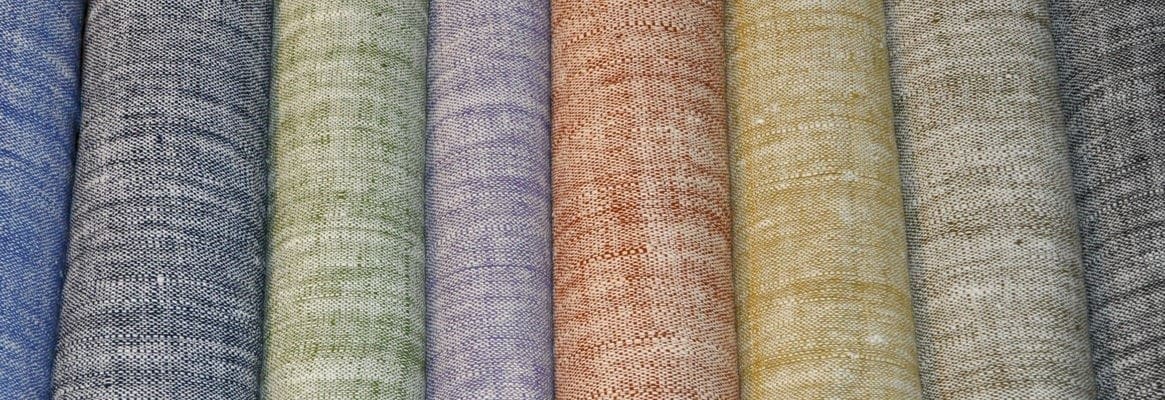“We cannot claim to have understood the meaning of swaraj until khadi becomes as universal as currency.”- Mahatma Gandhi
“Khadi” means the cloth which is hand spun and woven from desi cotton. Khadi cloth is woven on charkhas – handloom from natural fibres such as cotton, silk or wool which is spun into yarn on a spinning wheel or from a mixture of any two or all of such fibres/yarn. Khadi is green, zero waste, with zero carbon footprint, and these charkhas save electricity.
Pre-independence khadi was made from short-stapled cotton but due to Industrial Revolution demand for long-stapled cotton was raised & was imported from the US. So, the desi cotton died out. Now there is a hardly few acres that grow it. Today, ambar charkhas and new-model charkhas are also used to meet the worldwide increasing demand of khadi.
Khadi has a very profound and deep meaning in India, it is not simply a hand spun cloth, it’s an entire movement!
Khadi is more than a fabric; it is a way of life. It stands for independence and for going back to the basics.
Khadi movement started by Gandhiji, the Khadi movement promoted an ideology, an idea that Indians could be self-reliant on cotton and be free from foreign cloth and clothing.

British would buy cotton at cheap price from India, export them to Britain where it was woven to make clothes. These clothes were again sent back to India and sold at a hefty price!
The khadi movement aimed at boycotting foreign goods including cotton and promoting Indian goods, thereby improving India’s economy. Mahatma Gandhi began promoting the spinning of khadi for rural self-employment and self-reliance (instead of using cloth manufactured industrially in Britain) in 1920s India, thus making khadi an integral part and icon of the Swadeshi movement.
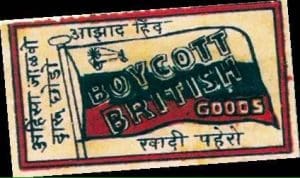
Khadi is the spirit of swadeshi. ‘Khadi’ the word reminds us of the freedom struggle, it brings the image of Charkha and Mahatma Gandhi to our minds. ‘Khadi’ is not just some random fabric, it played a major role in India’s independence, and today it’s making it grand by setting the latest fashion trends along with promoting sustainable fashion. The “Swadeshi Movement” which gave raise to textile & khadi production in India is also a move to sustainability. Nearly after seven decades of freedom Khadi continues to amaze people around the globe, promoting sustainable fashion and setting some latest fashion trends.
History
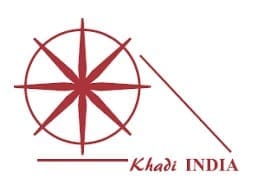
Khadi cloth is made from natural fibre that is hand spun and hand woven. The word Khadi is derived from ‘Khaddar’, a term used for handspun India. It is usually referred to a rough textured fabric. Khadi weaving is 5000- year-old practice for handsun & handwoven fabric which got its importance from Mahatma Gandhi through his movement of freedom in the 1920.
Started with the spinning in Takli, 2 spindle new model charkha, 4 spindle, 6 spindle, 8 spindle, 10 spindle and 12 spindle new model charkhas have been introduced in spinning of Khadi yarn. Likewise, a number of handlooms including Wardha loom, Gram Laxmi loom, and Pit loom are in operation in weaving Khadi cloth.
Pre-independence khadi was regarded as “Poor man’s fabric”. Mahatma Gandhi revived India’s flagging Khadi industry, he made the fabric the symbol of all things swadeshi – spin our own yarn & wear khadi.
The unique handmade quality of the fabric with its inherent defects which is the beauty of Khadi. And that exclusivity is what the Khadi connoisseur craves at all times. Khadi is not just a sound economic proposition but also a science and a romance.
Over the decade’s fabrichas moved from freedom fighter’s identity fabricto a fashion garment-creating some latest fashion trends. India is largest khadi producing country in the world.
The procedure from Cotton to Khadi
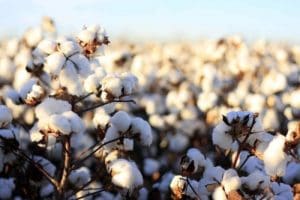

Since there is no any harm to nature in the processing & making of khadi which make it a sustainable fabric. The precise technology involved in the production of Khadi varies from region to region, as do the techniques used for its decoration i.e. dyeing, embroidery, printing etc.
FARMING:
The cotton balls are handpicked from the fields directly.
CLEANING:
The separation of fibres from cotton seeds is done by hand using a sharp comb, also locally known as fish jaws. This helps in providing superfine finish and grace to the fabric.
CARDING:
‘Carding’, the process is all about removing the final traces of trash from fibres and the carded material is then collected as ‘Silvers’.
SPINNING:
After carding, the silvers are then spun into yarn on a spinning wheel also known as Charkha, where they are thinned out and twisted at the same time to strengthen it.
REELING:
The spun yarns are then wounded into reels making it easy to transport to the weavers.
WEAVING:
The reels are then handwoven into fabric by skilled artisans.
DYEING:
The fabric made is sent to skilled laborers for dyeing, done with organic vegetable dyes to avoid as much use of chemicals as possible, keeping the process natural and pollution-free throughout.
The finished fabric is now ready to be sold or made into garments by retailers and designers.
The difference between Khadi and handloom fabrics is apparent in the texture. The small weaving errors or unevenness give it the particular Khadi charm.
The properties of Khadi that make it stand out of the box are-
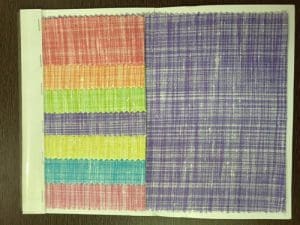
- It is a versatile fabric; cool in summer and warm in winter and is widely accepted in the fashion circles.
- Its loosely textured surface gives comforts to the wearer in all the seasons.
- It is an eco-friendly – Sustainable – Organic – green, zero waste with zero carbon footprint.
- Non-synthetic – natural fibres make it highly durable.
- Crease resistance
- Healthy fabric that makes good dressing sense.
- The more you wash it, the better it looks and feels.
- The fabric is approximately 3.24 times energy efficient than mill cloth.
- The rugged surface of the fabric gives it a unique texture because of that no two fabrics will be identical, which further leaves it inimitable and exclusive in terms of feel and texture.
The faces of Khadi
There are several varieties of Khadi fabric available in the market. However, there are four major groups in which it is divided based on the material which has been woven they are
1.Cotton Khadi 2.Silk Khadi (Eri, Muga and Pat)
3. Woolen Khadi 4. Poly Khadi

- Cotton Khadi :
This fabric is generally made from pure cotton yarns. Khadi cotton also has multiple variations according to the demand of clothing and fashion industry, like “Textile Khadi Cotton”, “Handloom Khadi Cotton”.
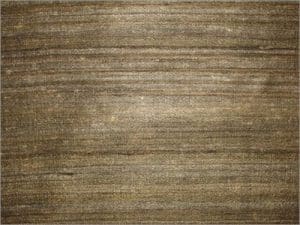
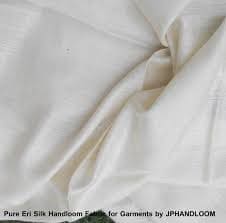
- Silk Khadi (Eri, Muga and Pat) :
This fabric has two subtypes of fabric, the first is pure Khadi silk which says the fabric is woven from completely silk yarns, the second type includes blending of several yarns. Khadi Silk with a mixture of other yarns produces varieties like- Matka Khadi Silk, Tussar Khadi Silk, Printed Khadi Silk, and Pattu Khadi Silk.
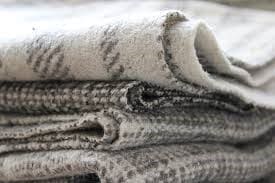

- Woollen Khadi :
Under this category Khadi is being woven from wool.

- Poly Khadi :
Khadi blends with other fibres to make raw Silk Khadi, Tussar Silk, Matka Khadi, Pondura Khadi and many more. All these are specially produced to make Khadi sarees.
The Indian market has now options of designer Khadi sarees and georgette Khadi sarees which are well appreciated by the buyers, but abroad the demand for pure Khadi cotton fabric still tops the priorities. Printed Khadi Cotton with Geometric prints and many other prints are very much popular in Khadi fabric world.
Promotion & Development of Khadi in India

In 1925, All India Spinners Association was established to produce and sell Khadi, the organizations worked day and night intending to improve Khadi production techniques and provide employment to India’s improvised weavers.
The Indian government after independence established the All India Khadi and Village Industries Commission (KVIC) in 1957, taking over the former All India Khadi and Village Industries Board.
The Khadi and Village Industries Commission is charged with the planning, promotion, organization and implementation of programmes for the development of Khadi and Village Industries in rural areas, in coordination with other agencies engaged in rural development. Ever since then KVIC has been making an effort to develop the Khadi industry in India. Khadi is being promoted in Assam byAssam Khadi & Village Industries Board (AKVIB), Govt. of Assam. It has 47 Khadi Production Centres operating under Khadi & Village Industries Commission (KVIC), Govt. of India, Ministry of MSME.
Employment Generation

Khadi production provides work for many men and women:
farmers, cotton pluckers, silk producers, spinners, weavers, thread cutters, washer people, ironers, folders, dyers, transporters and deliverers, plus many more employment opportunities.
In India about 15lacs villages depends on khadi industry either directly or indirectly for their livelihood.
A new generation is being trained in the ancient traditions of hand-looming, dyeing and other disciplines needed in the production and supply chain of Khadi.
The move to switch to solar charkhas makes the khadi industry a shining example of an employment-generating, eco-friendly industry,” says designer Ritu Beri, who was named advisor for khadi promotion in 2016.
Today there is such an increasing demand for Khadi that despite the millions of workers all over the country involved in spinning it, they are unable to meet the demand from the market.
Khadi’s share in textile production

The Khadi and Village Industries Commission stated that “The share of khadi fabric in the total textile mill production has doubled to 8.49% in 5 years to 2018-19. The rise in khadi fabric production from 4.23% to 8.49% could be possible due to Prime Minister Narendra Modi’s clarion call to adopt khadi.
“Taking Khadi local to Global”
Indian Khadi fabrics are sold in both domestic & export market. However, the share of “khadi export” in total textile sector is very low, less than 0.22% of total textile exports. This may be due to its slow manufacturing process through hands resulting in less production, more demanded globally & also the higher price.
Hence focus on exports of this sector becomes important. End to end marketing strategy with support from trading houses and academic institutes like IIFT is the need of the hour.
Khadi from Poor man’s fabric to Couture
Since early 90s, Khadi entered the world of fashion and started making a fashion statement. Khadi continues to amaze people around the globe, promoting sustainable fashion and setting some latest fashion trends.
With the coming of 21st century Khadi received a higher level of attention from the designers, they started exploring with this versatile fabric and made sure that the native fabric remains in vogue. From the desi- jholawala writer or artists and every other politician to a good for all eco fabric and bridal wear, designers have successfully experimented with the fabric in all of the above ways.
In 1989, KVIC organized the first Khadi fashion show in Mumbai, where around 80 styles of Khadi wear were showcased.

KVIC collaborated with FDCI to put up a khadi fashion show in the capital
The prestigious designer ofthe Indian fashion industry, Ritu Beri presented her first Khadi collection at Delhi’s craft museum, and now Khadi is making a global appearance.
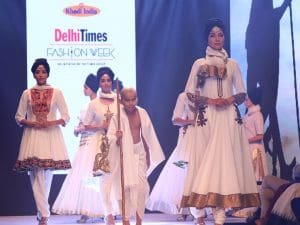



The biggest name of India fashion industrylike Sabyasachi, late Wendell Rodrick, Rajesh Pratap Singh, and others have opted for the fashion challenge to reinvent the humble fabric into high fashion wear. From the days of Gandhi to now the significance of Khadi is still high and in today’s time the fabric is well defining ‘haute couture”.
Khadi Collection by Sabyasachi
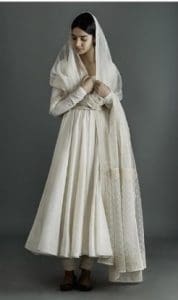


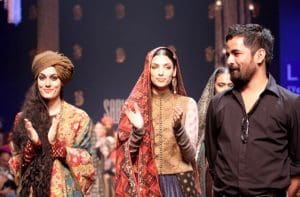

Rajesh Pratap Singh


Designer Rakesh Thakore — one of the prime movers of the Meanings… project — has no doubt that real khadi falls in the luxury category. In fact, internationally, it is thought of as such. The Japanese are some of the biggest fans of the handmade Indian textile. “The way it is spun and woven, and is so sensitively handled, makes it special. It is also one of the most wearable textiles. Layering of khadi garments can be beautiful, with each layer being of a different feel and texture,” he says, adding, “Issey Miyake was very fond of Mapu and he recently had a show in his memory, where he showcased a small selection of woven fabrics. It was well attended. Even today, Japanese designers quietly work in their own little spaces with our fabrics.”

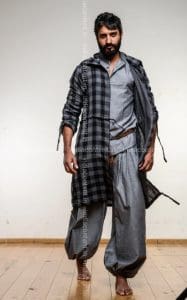
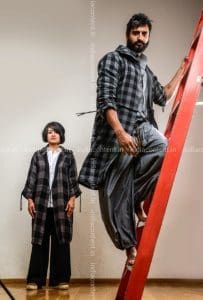

Chishti, a khadi expert says “We are talking about sustainable luxury at high value to those who can afford it. Handspun and handwoven cloth has moved away from the Gandhian dream of it clothing millions. That is not viable anymore,” she says. To restore khadi to its rightful place, we need to promote it as a sustainable industry and market it as a niche, high-end fabric.
“To make it aspirational, I think there should be more of a story and campaign around the fabric,” says Shri Vyshnavi Annush of Pookari, a curated online site that recently organised a pop-up of khadi saris from Chishti’s brand, Taan Baan. “It did surprisingly well, despite the pricing (in the ₹30,000 range). While many found it expensive, there was a handful who loved the texture, the higher thread count. Those who think nothing of buying international brands should take pride in our own textile heritage. That is the way to sustain the industry.”
Bengal and Andhra Pradesh are where most of the fabric we saw at the exhibition came from. It was a 5,000-year-old textile heritage we were looking at and as Kaul explained, India is perhaps the only country in the world where this kind of hand-spinning and hand-weaving still exists.
Khadi saris by Rakesh Thakore, Rta Kapur Chisti, Taan Baan, and others take centre stage at exhibition.
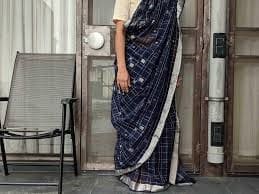


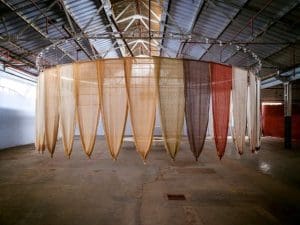
The fabric, which was once the symbol of the Indian National Movement, has since evolved. It is now fashion, luxury, every day, enterprise, meditation, a cause and so much more.
Now many Indian fashion designers believe that Khadi is India’s answer to Egyptian cotton and linen. It falls well and becomes second skin after two washes. It breathes, it has a self-texture. It has been blended with denim, wool, polyester and silk with good results. Khadi is quite competitive now depending on the style of the garment.
Brands that deals in khadi
Post-independence, The Khadi & Village Industries Commission (KVIC) was formed to develop and encourage the production of the fabric in the country. Today, large-scale apparel manufacturers are collaborating with the KVIC to use khadi in new collections and product lines. The Aditya Birla group launched ‘Khadi by Peter England’ for its menswear brand in late 2017, while Raymond worked with 100 khadi clusters at the grassroots level to launch a luxury collection called ‘Khadi, the Story Re-Spun’ in its Indian and international stores last year.
Raymond used khadi in both menswear and womenswear to change the perception of khadi
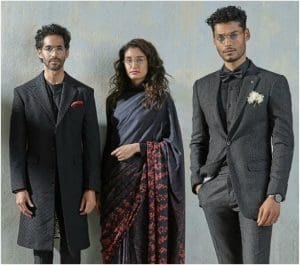

The Raymond campaign titled Khadi: The Story Re-Spun
Peter England
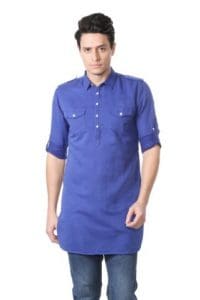

Handloom Denim
Khadi denim is possibly the world’s most sustainable denim, because every process is done by hand—therefore the carbon foot print is negligible.”

Contemporary brand 11:11
“Khadi is still looked at as a poor man’s fabric, and that has to change. I blame us as consumers and makers because we want to make things cheaper, rather than understand the beauty of it, create refined products, and target the right audience,” says Shani Himanshu of contemporary brand 11:11, whose denim khadi caught our attention a few years back.

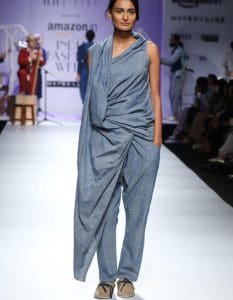
Other Brands

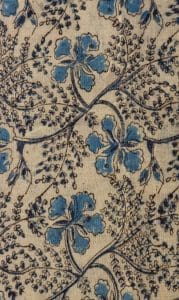

Nature Alley Malkha Red Sister Blue
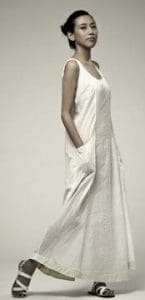
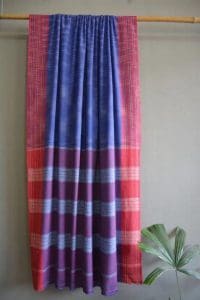
Fayakun Design Studio Metaphor Racha
Khadi at Fashion Show & at Lakme Fashion Week
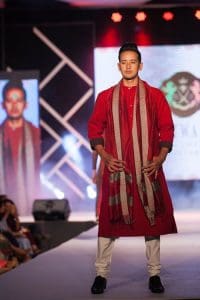


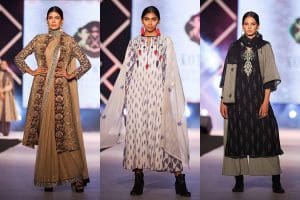
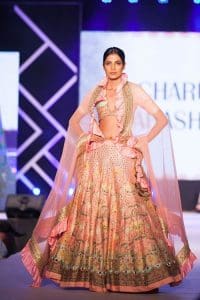

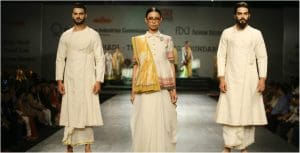




Made in India : Local to Vocal
There is a need to re-educate the people about khadi.

Rooting a revival in a skill that only India possesses, and a highly differentiated product that no other textile ecology in the world has, is the way forward. Khadi also has a deeper meaning — of being produced locally, by locals, for locals.
“The fabric created on the single-spindle charkha, where the artisan spins every millimetre of fibre by hand, is the most luxurious in the world and should be priced more.”
I believe that perceptions have changed with the Prime Minister becoming the brand ambassador for Khadi.
So yes, Khadi is riding a wave. But then, it has always been perched on a see-saw.
—————————————————————————————————————-
Article by Ms. Hetal Mistry
B.Sc. Textile and Apparel Designing Department from Sir Vithaldas Thackersey College of Home Science (Autonomous), SNDT Women’s University – Juhu
Trainee Intern : Textile Value Chain
References :
https://www.becauseofnature.com.au/blogs/news/the-khadi-revolution
https://www.thehindu.com/life-and-style/charkha-of-change/article26090230.ece
https://hts.assam.gov.in/portlets/khadi-production-0
https://www.fibre2fashion.com/industry-article/5429/khadi-pride-of-india
https://shodhganga.inflibnet.ac.in/bitstream/10603/11727/10/10_chapter%203.pdf
https://pib.gov.in/Pressreleaseshare.aspx?PRID=1518334
https://thevoiceoffashion.com/fabric-of-india/crafts-and-textiles/the-state-of-khadi-988
https://www.hamstech.com/blog/fashion-designing-today-importance-of-khadi-in-indian-attire/
https://www.vogue.in/content/vogue-investigates-how-khadi-is-making-waves-in-indias-fashion-industry
https://gulfnews.com/lifestyle/fashion/sabyasachi-mukherjees-push-for-khadi-revival-1.606225
https://thevoiceoffashion.com/fabric-of-india/crafts-and-textiles/the-state-of-khadi-988
https://www.hamstech.com/blog/fashion-designing-today-importance-of-khadi-in-indian-attire/
https://thevoiceoffashion.com/fabric-of-india/crafts-and-textiles/the-state-of-khadi-988
https://www.boldsky.com/fashion/trends/ritu-beri-khadi-show-at-delhi-times-fashion-week-125774.html

